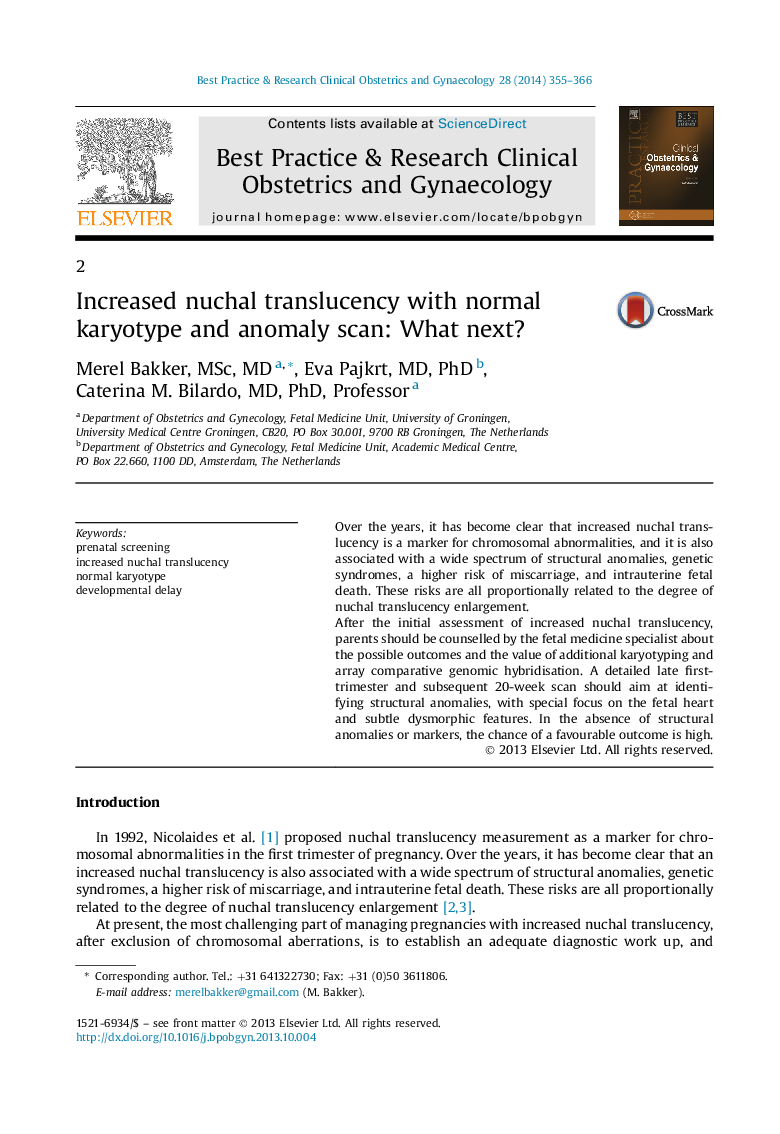| Article ID | Journal | Published Year | Pages | File Type |
|---|---|---|---|---|
| 3907278 | Best Practice & Research Clinical Obstetrics & Gynaecology | 2014 | 12 Pages |
Over the years, it has become clear that increased nuchal translucency is a marker for chromosomal abnormalities, and it is also associated with a wide spectrum of structural anomalies, genetic syndromes, a higher risk of miscarriage, and intrauterine fetal death. These risks are all proportionally related to the degree of nuchal translucency enlargement.After the initial assessment of increased nuchal translucency, parents should be counselled by the fetal medicine specialist about the possible outcomes and the value of additional karyotyping and array comparative genomic hybridisation. A detailed late first-trimester and subsequent 20-week scan should aim at identifying structural anomalies, with special focus on the fetal heart and subtle dysmorphic features. In the absence of structural anomalies or markers, the chance of a favourable outcome is high.
